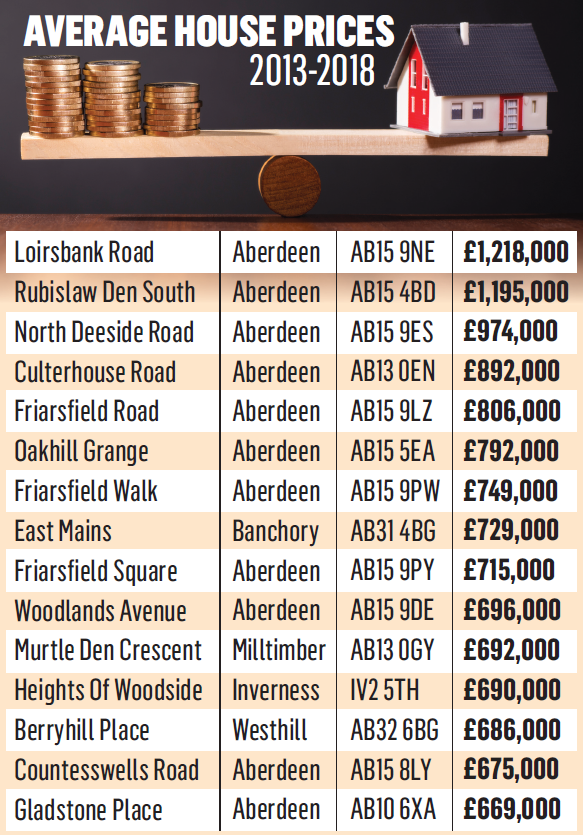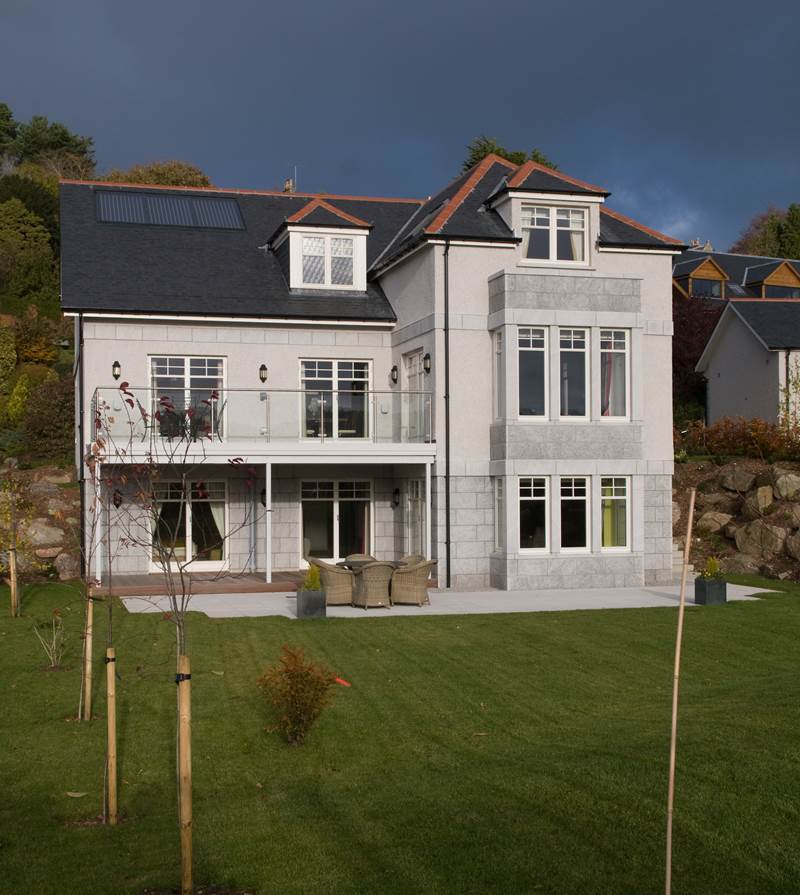Aberdeen’s west end has held onto its reputation as being one of the most expensive places in Scotland to live.
Loirsbank Road in Bieldside and Rubislaw Den South are near the top of list of priciest places to live, according to the Bank of Scotland study.
Golf Place in St Andrews was number one on the list for the second year running, with an average house price of £1.975 million.
Average house prices have fallen since the statistics were published last year, when the average price of a property on the famous street – which leads to the Old Course, would have set a buyer back £2,179,000.
>> Keep up to date with the latest news with The P&J newsletter
 Unsurprisingly, Edinburgh had 12 of the top 20 most expensive streets, with Ann Street second overall with an average value of £1.7million.
Unsurprisingly, Edinburgh had 12 of the top 20 most expensive streets, with Ann Street second overall with an average value of £1.7million.
Aberdeen’s two most costliest locations were also worth more than £1million, with the average price for Loirsbank Road about £1.2million and £1.19million for Rubislaw Den South.
Elsewhere in the city, the average house price on North Deeside Road was £974,000 and in Culterhouse Road, £892,000. In Friarsfield Road in Cults, the figure was £806,000.
In Aberdeenshire, the steepest prices were found on East Mains in Banchory which cost an average of £729,000.
In the Highlands, the prime location was revealed as Heights Of Woodside in Inverness where the figure was £690,000.
Ricky Diggins, director at the Bank of Scotland, said it was Glasgow which had created some significant new entries on the list.
He added: “For the second consecutive year, no location in Scotland is on a par with St Andrews when it comes to the country’s most prestigious addresses.
“However, it is good to see a new entry from Glasgow, creating four of the most expensive streets in the city, and not just in the traditionally expensive west end.
“It is no surprise that the capital dominates the majority of the top spots on the list, particularly given that the average house price continues to be among the highest in the country.”
Aberdeen west end councillor Jennfer Stewart said the “character” of the area meant that it was “no surprise” it remained popular with buyers.
She said: “Despite the economic downturn in the city, and I know some houses are taking longer to sell, these streets are beautiful and have a great community feel and lovely big gardens.
“In places like Rubislaw Den it almost feels like the countryside because the gardens are so big and the houses so spaced. That’s a really rare thing in the middle of a major city.”
Ward colleague Martin Greig added: “The west end has long had an enivable reputation as a very pleasant place to live and I’m glad to see it is still proving popular.
“It is reassuring to know that the area remains somewhere people are buying homes in depsite the well-publicised dowturn in the econony and the knock-on this has had with the housing market.
“There is a particualr character in the area, with good local facilities, schools and communities, and I think that is the big draw.”
